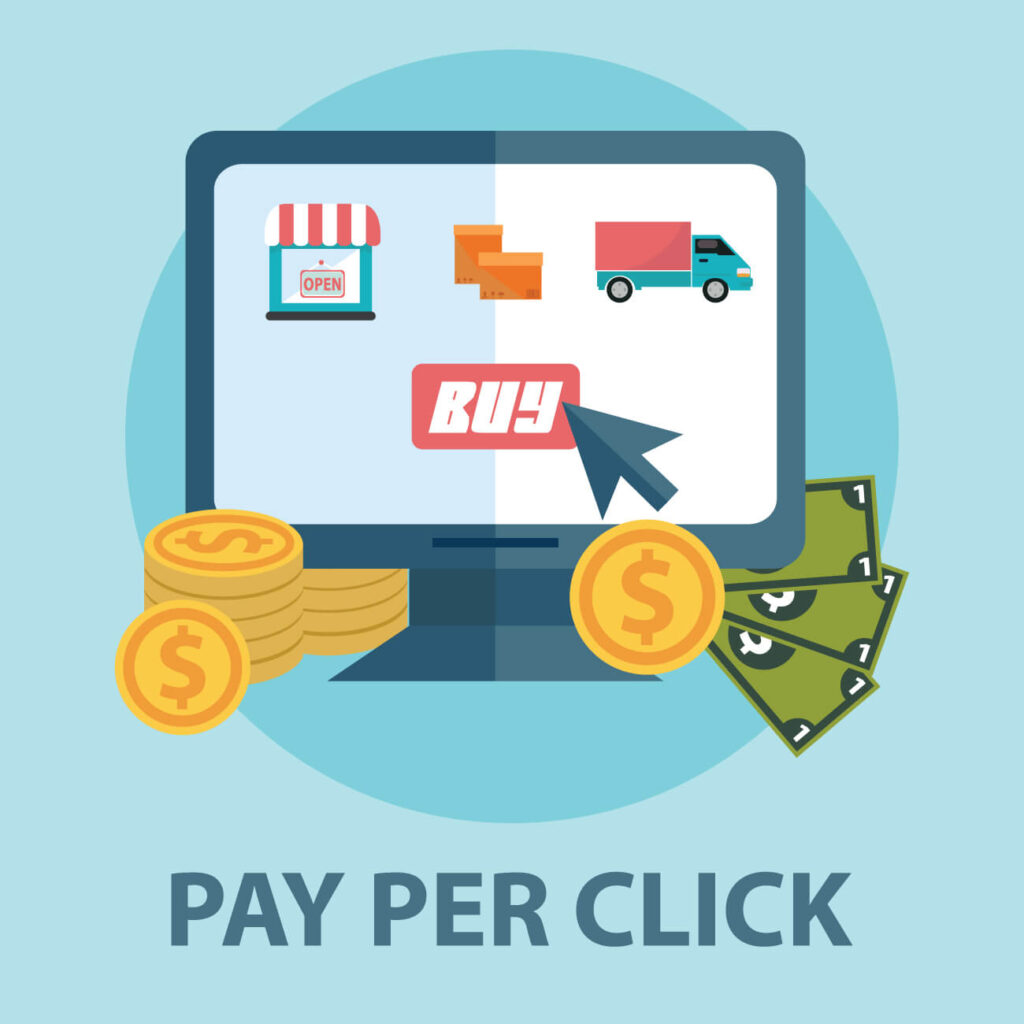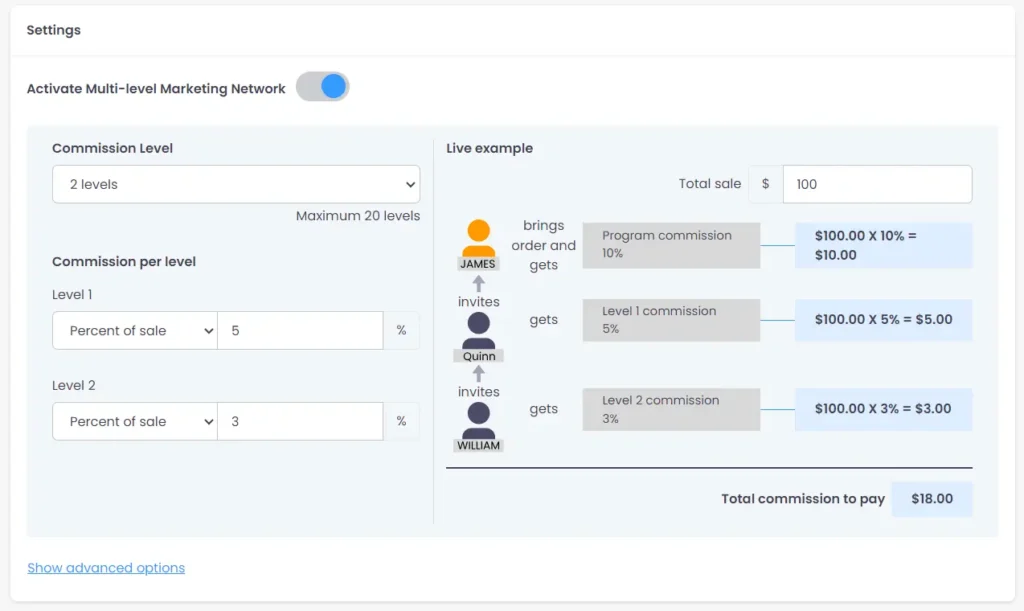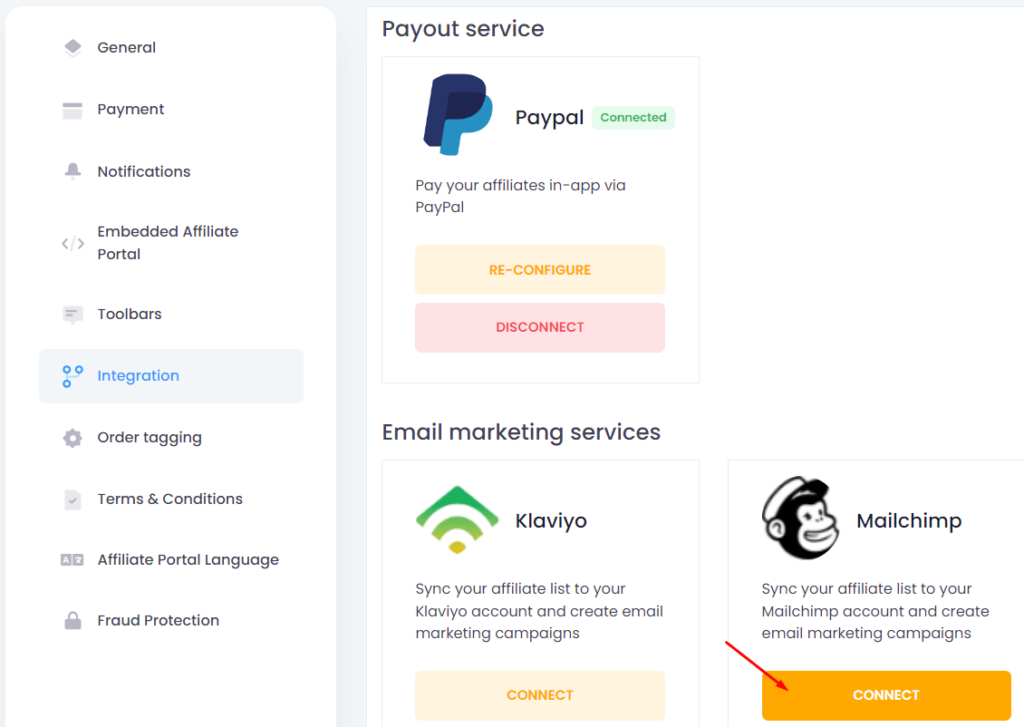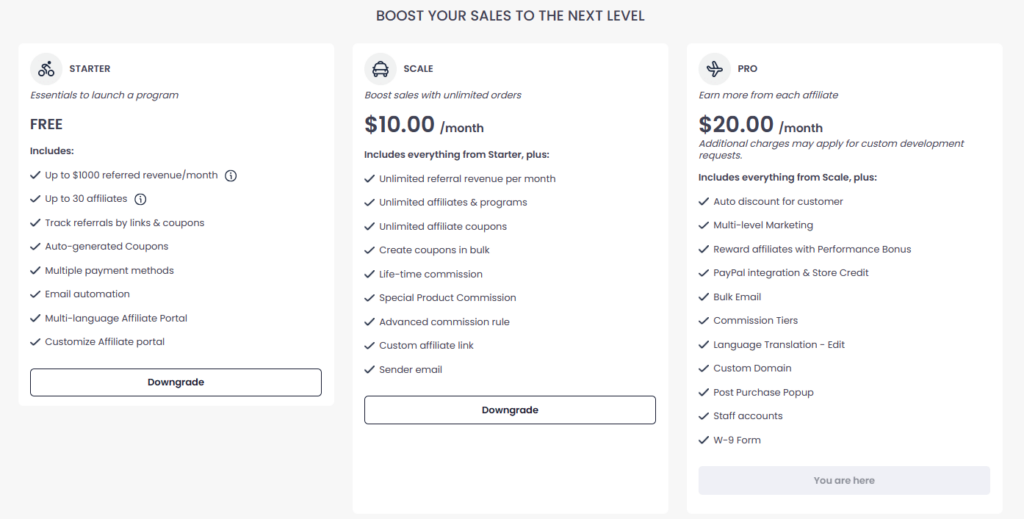Affiliate Marketing is an ever-evolving industry, and businesses and affiliates alike are encouraged to have a deep understanding of commission models to find the best strategy for their business.

At BixGrow, we recognize the importance of delving into these models. In this post, we will walk you through various commission models to determine how affiliates earn income. Here are some types:
What is the Affiliate Commission?
Firstly, imagine a triangle with 3 pillars, business-affiliate-customer.
Businesses want to improve revenue or build up a market strategy for the next year. However, they don’t have enough marketing resources to connect with a wide range of customers.
It’s where affiliates step in. Affiliates help the business to get its desired goals, typically sales, leads, or clicks, through their promotional efforts. In turn, the business pays them an amount of money or such efforts, which is called “commission”.
So, an affiliate commission is the amount that a business compensates another business or affiliate for generating sales or desired actions. This collaboration can occur through various channels such as web content, social media, or product integrations
What is a Commission Model
Commission models go by many other names, such as compensation model, price format, payout model, conversion type, commission structure, and so on.
In affiliate marketing, commission models define how affiliates are compensated for their efforts. There are diverse commission models applied in affiliate marketing, such as Pay-Per-Sale (PPS), Pay-Per-Lead (PPL), Pay-Per-Click (PPC), Revshare (Revenue Share), and multi-tier commission. A program’s commission structure can be a combination of the above.
A commission model is basically the answer to the question: “What goals do affiliates need to achieve to receive commissions?”. Just like a blueprint – it outlines the criteria and requirements so that affiliates clearly understand what they need to do.
In essence, it acts as the guiding force on how the brands are promoted, and how affiliates earn. The choice of a commission model shapes the nature of collaboration business-affiliate collaboration. The models we mention in the following parts offer flexibility for businesses and affiliates to choose the most suitable arrangement based on their goals and priorities.
1. Pay per sale (PPS)
Pay per sale (PPS) is the most preferred affiliate marketing commission model type. In this model, affiliates receive a commission for each sale generated through their affiliate link.
The earnings are directly tied to the completion of a sale, with no ongoing payments for future transactions made by the customer.
Example: An affiliate has a PPS agreement of a flat $20 for each order placed, they earn $20 regardless of the order value.
Common use cases: PPS is applicable in most cases. However, it is highly preferred in E-commerce, Product Sales, and Online Retail, especially with high-value products such as luxury clothes.
It is preferred due to its ability to ensure profitability for advertisers, as they only pay commission for successful sales.
2. Pay-per-lead (PPL)
In the Pay-per-lead commission model, affiliates are compensated for generating leads (known as potential customers) for the brand.
To be more specific, affiliates drive audiences to a site that takes a specific action, like filling out an investigation form or signing up for a trial. It takes time for the advertiser to examine the results. Rach qualified result is recorded as a lead, and affiliates get paid for it (after a couple of days or months of waiting).
Example: 200 customers complete a survey of a local car agency, but only 170 submissions made by people over 18 and owning at least 01 car are accepted.
Common use cases: Industries where acquiring potential leads is valuable, such as insurance, education, and B2B services.
Commission rates for each lead may be lower than that of sales, as they are easier to achieve.
3. Pay-per-click (PPC)
Pay-per-click (PPC) is a commission model in which affiliates earn a commission based on the number of clicks on their referral link, regardless of whether a sale occurs.
Clicks could made via affiliate links, banners, pop-ups, and ads. This method is especially effective on mobile platforms.

Common use cases: The PPC commission model is often used by launching brands when their goal is prominent in search engine results, website traffic, and increasing brand recognition.
The model sounds magically easy as clicks are more achievable (than sales or leads) and affiliates tend to get easy money. The easy-money part is true, however, they make much less – unless the affiliate performances are exceptional. Therefore, such campaigns related to links or ad clicks are carried out by marketing agencies or experienced affiliates.
4. Cost Per Action (CPA)
In the CPA is a basic compensation model, affiliates earn a commission when users take a predefined action that the business considers valuable. They could be app installation, signing up for a trial, or completing a form, etc.
It can include (at the same time) all of the models above PPL, PPC, PPS, and more. This model allows merchants to reward affiliates for valuable actions, even without an immediate revenue impact.
Example: For example, an advertiser that pays for three following – 2$ for every 50 clicks, 1$ for 5 app downloads, and $3 for each sign-up for a free trial. Affiliates can earn from any phase.
Common use cases: The CPA price model is applicable for every business to achieve strategic goals, even without an immediate revenue impact.
Furthermore, there are also common payout models, that are specified in certain actions and can be incorporated into CPA, such as:
- Pay-per-Millie (PPM): also known as Pay-per-thousand-impression, in which affiliates get paid for the number of impressions generated by the referral link.
- Pay-per-call: in this model, affiliates will receive commissions for a number of phone calls generated through their affiliate links.
- Pay-per-installation: Pay-per-installation is a compensation model where affiliates earn money for each successful app or software installation. This model is employed particularly SasS industry.
- Pay-Per-Trial: Pay-per-trial pay for affiliates for each sign-up for a trial via the link.
5. Revenue Sharing (RevShare)

In the revenue-sharing commission model, advertisers share with affiliates a fixed percentage of their revenue generated from sales or transactions from their referrals over time.
Example: Consider a scenario in which an affiliate has a 10% Revshare agreement with a game brand. If the player he referred purchases $1000 in the first month and $500 in the next month, the affiliate ends up earning $100 and $50 respectively.
Common use cases: Particularly common in businesses that offer subscription services and industries where users engage in numerous transactions (online games, e-commerce marketplaces,…)
Generally, the duration that the affiliate can earn commission can last from 6 months to a lifetime.
Furthermore, the standard commission can be up to 75% but can be exceptionally high in some cases. This model is exceptionally appealing to affiliates when applied in industries that are likely to experience spikes in profitability. We can name a few such as real estate investment, forex trading, online casino, sports betting, mobile games, or even porn sites affiliate.
6. Recurring Commission
In the Recurring Commission model, affiliates receive a fixed amount of the revenue the referred customer generates regularly, typically every month or quarter.
Example: If an affiliate has a 10% Recurring Commission agreement and the app monthly subscription cost is $50, the affiliate earns $5 for his customer’s first subscriptions. He earns $5 for every month as long as that user stays with the app.
Common use cases: Especially common in subscription-based services, such as service, software, or mobile apps.
Just like RevShare, affiliates receive subscription-based compensation in the future leading to substantial and consistent income. But…
How are Rev-Share and Recurring Commission different?
Revenue Sharing Commission is calculated based on the total value of transactions made by the referred customer, while the Recurring Commission is associated with repeated transactions or ongoing subscriptions. Two models may be applied to overlap.
| Month | Subscription Revenue | In-App Purchase Revenue | Total Revenue | Recurring Commission (10%) | Revenue Share (10%) |
| 1 | $20 | $10 | $30 | $2 (10% of $20) | $3 (10% of $30) |
| 2 | $20 | $0 | $20 | $2 (10% of $20) | $2 (10% of $20) |
| 3 | $20 | $20 | $40 | $2 (10% of $20) | $4 (10% of $40) |
| Commission After 03 Months | $6 | $9 | |||
These two models encourage affiliates to maintain relationships with customers over time. Meanwhile, the brands simply have a stable stream of customers and in-app sales as long as they can retain service quality.
7. Multi-Level Commission (MLM Commission)
Multi-Tier Commission is a part of Multi-level Marketing (MLM) which allows affiliates to earn based on the sales they generate but also from the sales of their recruits.
In the MLM commission model, affiliates earn not just from their sales but also from the sales generated by affiliates they’ve directly recruited and people recruited by those affiliates.

Example: Consider a scenario where an affiliate program pays affiliates $20 for each sale and a $1 bonus for every sale made by their recruits. As Andy recruits Brain and they generate 1 and sales respectively, Brian will receive a $40 commission but Andy will get $22.
The example seems straightforward because it is a 2-level commission structure. In reality, MLM is the most sophisticated model, which can combine various models on multiple levels.
Common Use Cases: The commission model is applied in various industries such as goods, financial services, health and wellness products, technology, and more. MLM encourages rapid growth for businesses seeking collaborative, network-driven sales structures.
Despite its potential, the MLM affiliate model is often mistaken for pyramid schemes due to their shared pyramid-shaped representation. However, MLM is totally legit, whereas pyramid schemes are not.
In MLM, affiliates receive payouts based on their sales performance, emphasizing the importance of tangible product or service transactions. In contrast, pyramid schemes often necessitate an upfront investment from new participants, with the primary income source being recruitment rather than the exchange of goods or services.
Hybrid Models? How does it benefit?
Hybrid models combine elements of multiple commission models. This combination allows sponsors and affiliates to benefit in various ways and target different business goals. The following are a few motivations behind why crossed models are worth considering:
It offers affiliates many ways to earn
With different commission types inside a model, promoters can expand their income streams. This broadening model breaks the limit of a solitary commission structure, allowing affiliates to experiment to choose the most effective promotion strategy.
Various partners have various qualities and excellence in different domains. Crossover types of models allow affiliates to acquire customers in light of their assets. They can also be encouraged to differentiate their efforts to amplify their general income potential.
Flexibility to Corporate Objectives
A mixed model is adaptable to different mission objectives. Advertiser can adjust their intent to line up with explicit goals, whether it’s driving sales, leads, or expanding brand perceivability.
For example, a hybrid model might combine Multi-level Marketing Commission with Pay-Per-Lead (PPL), but not with Pay-Per-Sale (PPS). This approach focuses on a substantial increase in the potential customer base for the brand can exploit in the future while ensuring a decent income for affiliates through PPS.
This model is particularly effective in the insurance industry. In this context, business highly depends on word-of-mouth marketing and potential customer-driven conversions, while the conversion rate is smaller but at a high value for a single purchase. The strategy is sound, fostering a balance between business expansion and consistent affiliate interests.
Note: It’s important to note that individual commission models are still effective in their ways and are popularly applied today. In turn, it is not easy to design a mixed commission structure for affiliate marketing campaigns.
How to manage such a hybrid model structure?
Today, new programming arrangements are available to help organizations smooth out their business-and-partner working experience.
BixGrow is one program offering various elements that can help your business make and calculate commissions more effectively. Furthermore, we offer different commission structure models.
Various commission models
The flexibility in commission models is one of the outstanding points of BixGrow. We offer pay-per-sales, pay-per-click, MML, and numerous others. This empowers brands to fit affiliates to their particular requirements and ideal customer groups, improving conversion rate. Besides, the capacity to combine different types of models gives affiliates more.
Real-time Automatic-Tracking Dashboard
One more benefit of utilizing BixGrow is its capacity to consequently follow member referrals and sales. This disposes of the requirement for tedious and blunder-inclined manual following.
We provide a real-time reports dashboard on the performance of the associate program, including the number of transformations and profit. This empowers shop owner to pursue information-driven adjustments to advance the presentation of their associate program seamlessly.

Multi-level Marketing Enhancements
BixGrow Multi-Level Marketing Enhancements stands out as one of the premier apps in the current e-commerce landscape.
We empower users to seamlessly build and construct complex multi-tiered affiliate systems. This function also ensures a systematic calculation of profits for affiliates based on their respective tiers.
By incorporating multi-level marketing enhancements, businesses can not only experience growth hacks but also foster a network of close-knit affiliates community and maximize their profits.

Inclusive control
Bixgrow gives various offshoots of the executive’s instruments. This function permits advertisers to productively support and also limit (or remove) the power of low-performing or negative partners. Besides, the various options to manage affiliates who participate in false exercises can safeguard the business from monetary misfortunes and reputational hurt.
Apps incorporation
BixGrow works effectively with different outsider apps, for example, Klaviyo, Mail Chimp, and PageFly, and meaninglessly integrates with Shopify. Such apps allow email referral stages, and examination devices, which create a smooth workflow for business managers and partners.
This gives organizations an all-in-one resource to work seamlessly with affiliates and enhance their versatility and usefulness.

Financially savvy
BixGrow is a zero-cost solution for businesses hoping to set up an affiliate program. We provide various elements found in more costly affiliate marketing software, making it an engaging choice for small to medium-sized organizations.
Monthly Bixgrow’s pricing is incredibly budget-friendly, less than the cost of a meal.

Conclusion
A deep understanding of Affiliate Marketing Commission Models becomes a cornerstone for success, whether you are a business owner or an affiliate. Arming yourself with knowledge about PPS, PPL, CPA, multi-tier commission, and recurring commission will sustainably optimize earnings from an affiliate program.
The use of an application specialized in affiliate marketing like BixGrow becomes a strategic advantage. With our cost-saving, flexibility, automation, and high customization tool, we are in the leading position of providing affiliate marketing excellence.